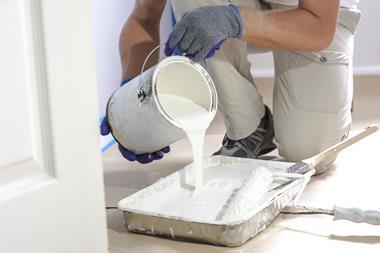You share your views on whistleblowing, titanium dioxide and potash mining
Of parks and potash
I was very concerned by the content and tenor of the recent article on potash mining in North Yorkshire. I am very familiar with the remarkably beautiful area, having lived there until quite recently. While the article says that many are enthusiastic about the development, it says less about the great local opposition to the plans. Land owners look to the potential financial benefits, but others are concerned with the impact on the local tourist business in nearby Whitby and the towns and villages along the coast. The group set up by the North York Moors National Park to evaluate the pros and cons came to the conclusion that any economic benefits were outweighed by the overall detrimental impact on the area. A BBC Countryfile broadcast highlighted the concern that the proposed development would contravene for the first time many fundamental principles which protect our national parks.
It is difficult for campaign groups – or local authorities – to challenge planning applications by large organisations because of the legal costs involved. It is interesting that as soon as the application was approved, quoting employment opportunities that would become available, the Boulby potash mine announced 300 redundancies.
We are constantly told that there is a very great need to develop shale gas extraction.
We also know that large reserves exist in the South Downs. What are we waiting for? Could it be that too many wealthy and politically influential people live in that area? Or that such developments should take place only in the North?
Howard Curtis EurChem CChem MRSC
Liverpool, UK
Whistleblowers must be protected
I read with interest Jeffrey Kovac’s comment on why we must have a code of ethics for chemists. But aren’t ethics a matter of both personal and professional standards? A codes of ethics addresses nurture, not nature: the old behavioural enigma!
My first introduction to a colleague falsifying results was in the late 1940s. The reason was nothing to do with ethics: it was idleness. The technician was too lazy to test the samples. His undoing was that he didn’t even bother to take any of the samples out of the full bottles to disguise his cheating. It was an unpleasant episode because it threw suspicion on other colleagues.
During my time on the ethical practices committee of the Royal Society of Chemistry, there were complaints by members about pressure from their employers to falsify results. ‘Who is paying your wages?’ was a threat sometimes levelled against members seeking help. The need for ethical standards goes much wider than the scientific community.
In his thoughtful conclusion, Kovac refers to the moral courage to do the right thing. We are fortunate that there are courageous men and women who know that they will pay a price financially and professionally for exposing corruption and incompetence and do so anyway. It seems to be an intractable problem. Whistleblowers know too well that fine words butter no parsnips.
Walter Cuthbert EurChem CChem FRSC
Titanium dioxide safety
The recent article on titanium dioxide (TiO2) mentioned the concerns over the safety of this pigment, which is currently being re-evaluated by the European Food Safety Authority. TiO2 has been subjected to extensive clinical and experimental investigation, much dating to the 1970s, but interpretation of these older studies in light of present day knowledge is complex and requires considerable caution.
TiO2 is ubiquitous in the human environment and exposure occurs through ingestion in food, occupational exposure to dusts and skin contact. It is virtually insoluble (3×10-6) in water, hydrochloric acid and most organic solvents; and is not absorbed percutaneously. Gastrointestinal absorption of TiO2 is low and without serious effect. The mechanisms of uptake are not well documented, but presumably occur either by passive diffusion or by the action of macrophages. Minute amounts of titanium (Ti4+) bind to transferrin in the blood and are eliminated via the urine.
Experimental studies in rodents exposed chronically to massive TiO2 inhalation over periods of up to two years have reported lung tumours. However, a significant incidence of TiO2-related tumours was not observed in mice or hamsters following inhalation or intratracheal administration, indicating differences in response between species. The International Agency for Research on Cancer reviewed published data up to 2006, and emphasised that nanoparticles (<100nm) with high surface area in relation to mass would be more toxic than fine particles. Eight occupational health studies involving several thousand workers exposed to TiO2 dust for long periods failed to provide sufficient evidence of carcinogenicity.
TiO2 is regarded as a ‘nuisance dust’ in rats exposed to low concentrations where alveolar clearance mechanisms are sufficient to mitigate pulmonary stress attributable to accumulation of insoluble inhalates. At higher concentrations, TiO2 saturates inherent protective mechanisms, leading to profound pulmonary inflammation. Chronic pulmonary inflammation in rats with release of pro-inflammatory cytokines, chemokines and growth factors is known to promote malignant transformation and carcinogenesis. The Canadian Environmental and Workplace Health Committee concluded in 2010: ‘The tumorigenic effects of titanium dioxide exposure in rats are not chemically-specific nor a direct action of the chemical itself. The effects are a function of particle size and surface area acting through a secondary genotoxic mechanism associated with persistent inflammation.’
The proven safety of TiO2 in biomedical applications greatly outweighs the contentious views on its carcinogenicity in rats. Titanium is among the safest elements in the periodic table.
Alan Lansdown FRSC
Imperial College London, UK












No comments yet